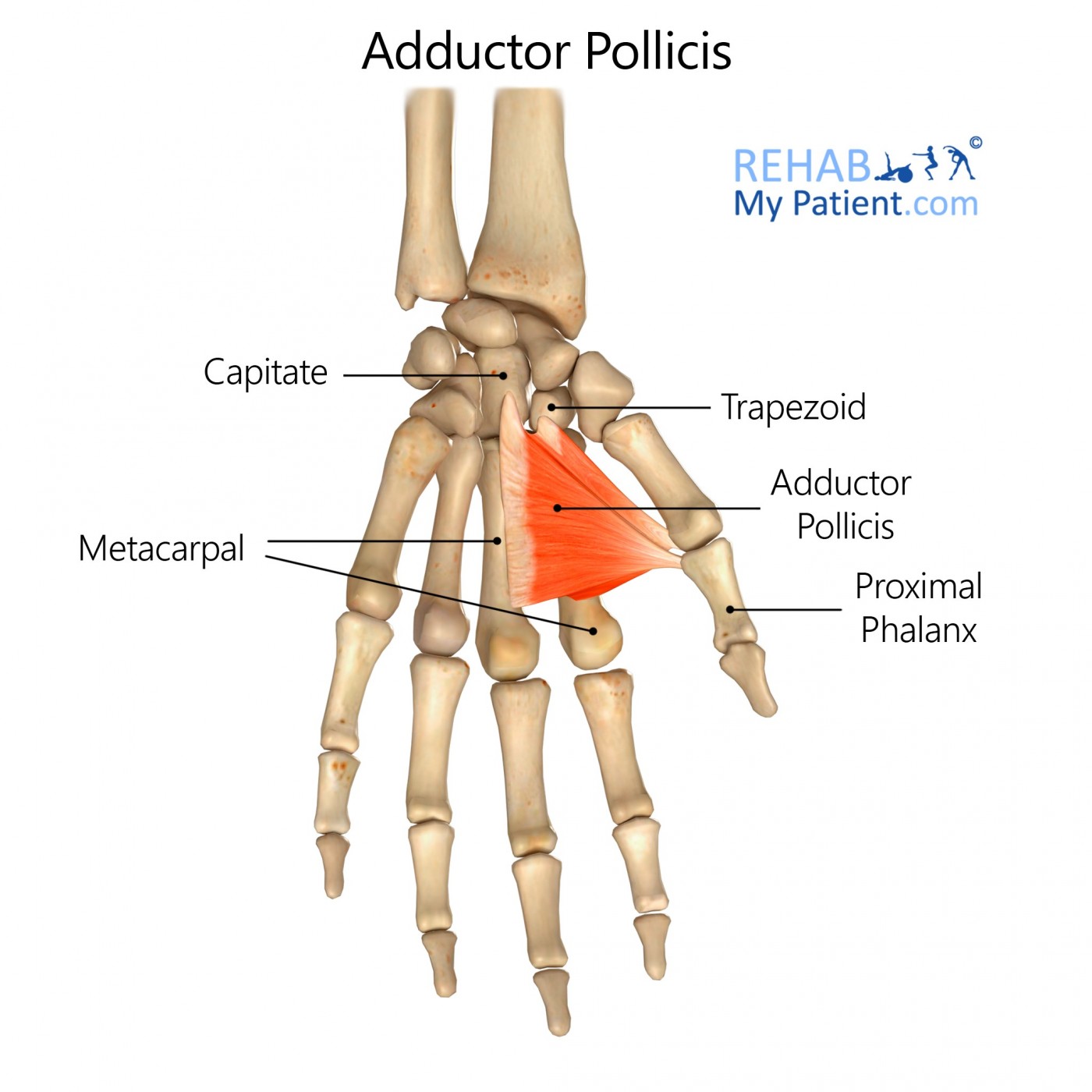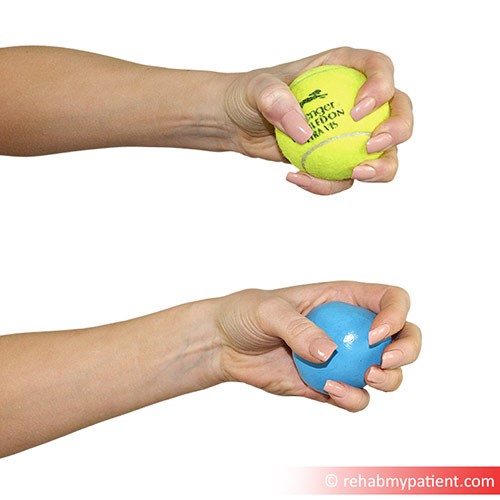
General information
The adductor pollicis is one of 38 muscles which control the human hand.
Literal meaning
Long muscle which brings the thumb closer to the midline of the hand.
Interesting information
The adductor pollicis is a fan-shaped muscle composed of two parts, or heads: the oblique head and the transverse head. While its primary function is to adduct or bring the thumb back towards the palm of the hand, it also provides 50% of the adduction force to the first metacarpal.
To feel the adductor pollicis muscle, spread your fingers and hold your palm flat and facing upwards. Place two fingers in the web space between your thumb and the base joint of your index finger. Move your fingers down to just above the fleshy part of your hand below your thumb. Adduct your thumb by bringing it closer to the palm and into its resting position, parallel to your fingers – the muscle contracting beneath your fingers with this movement is the adductor pollicis.
Pain in the adductor pollicis can occur due to osteoarthritis, soft-tissue trauma in the hand or excessive strain. One condition which can affect the adductor pollicis and thumb adduction is the gamekeeper’s thumb, in which the ulnar collateral ligament above the adductor pollicis is overly strained. Aggravated cases of gamekeeper’s thumb are called Stener’s lesions, in which the ligament becomes torn, separating it from the joint. Most of these injuries can be treated simply by immobilising the thumb using a splint to allow the damaged ligament to heal. In the case of extensive or total ligament tear, surgery and rehabilitation is required to repair the ligament and restore thumb stability.
Origin
Oblique head: capitate bone and base of the second and third metacarpal bones;
Transverse head: palmar surface of the third metacarpal bone.
Insertion
Ulnar side of the base of the proximal phalanx.
Function
Adducts the thumb towards the fingers, also assists in thumb flexion.
Nerve supply
Deep branch of the ulnar nerve (T1).
Blood supply
Deep palmar arterial arch.

Relevant research
It has been observed that muscle fatigue of the adductor pollicis occurs more slowly in women than in men. Studies also demonstrate that the adductor pollicis recovers faster from muscle exhaustion in women compared to that in men.
Fulco CS, Rock PB, Muza SR, Lammi E, Cymerman A, Butterfield G, Moore LG, Braun B, and Lewis SF. Slower fatigue and faster recovery of the adductor pollicis muscle in women matched for strength with men. Acta Physiol Scand167: 233–239, 1999.
Some studies have shown that the thickness of the adductor pollicis muscle may be anthropometrically correlated to nutritional health. Anthropometry is the comparative study of size, weight and proportion of the human body. Using this science, adductor pollicis thickness may be used as a parameter in predicting body muscle mass.
Claudia Cravo, Edson B. Lameu, Marcia H. Costa, Celeste C. Elia, Cyrla Zaltman. Adductor Pollicis Muscle: A New Anthropometric Parameter of Nutrition Status in IBD Patients.Gastroenterology 1 May 2009 (volume 136 issue 5 Page A-667
Adductor magnus exercises
Stimulating the adductor pollicis can lead to improvement in muscle strength and functions such as gripping and lifting. A simple strengthening exercise for this muscle can be done using a rubber stress ball or tennis ball. Grip the ball firmly with your thumb and all four fingers, holding the tension for 10 seconds before releasing. Perform 20 repetitions of this exercise 3 times per day.

Resisted thumb adduction
Hook a finger of your opposite hand around your thumb. Resist moving your thumb inwards towards your other fingers.
Sign Up
Sign up for your free trial now!
Get started with Rehab My Patient today and revolutionize your exercise prescription process for effective rehabilitation.
Start Your 14-Day Free Trial